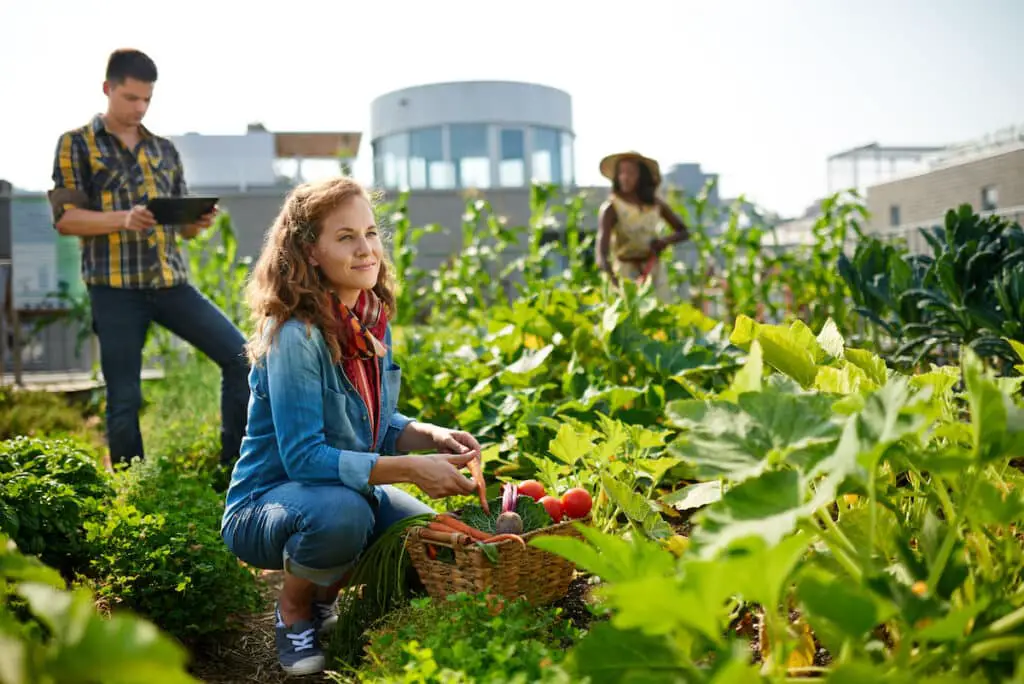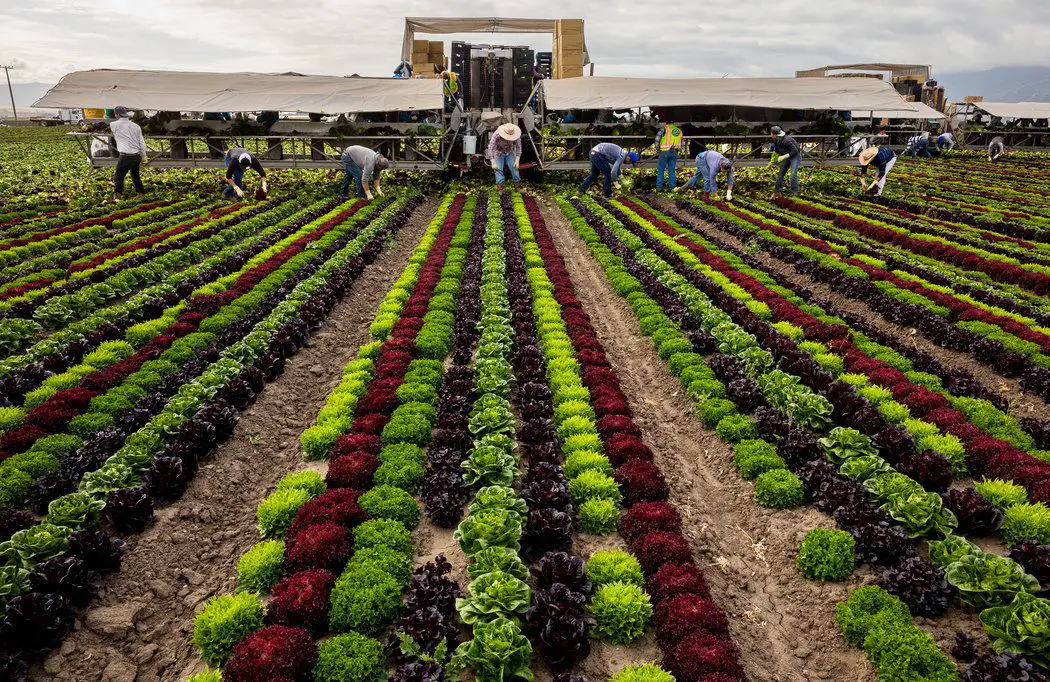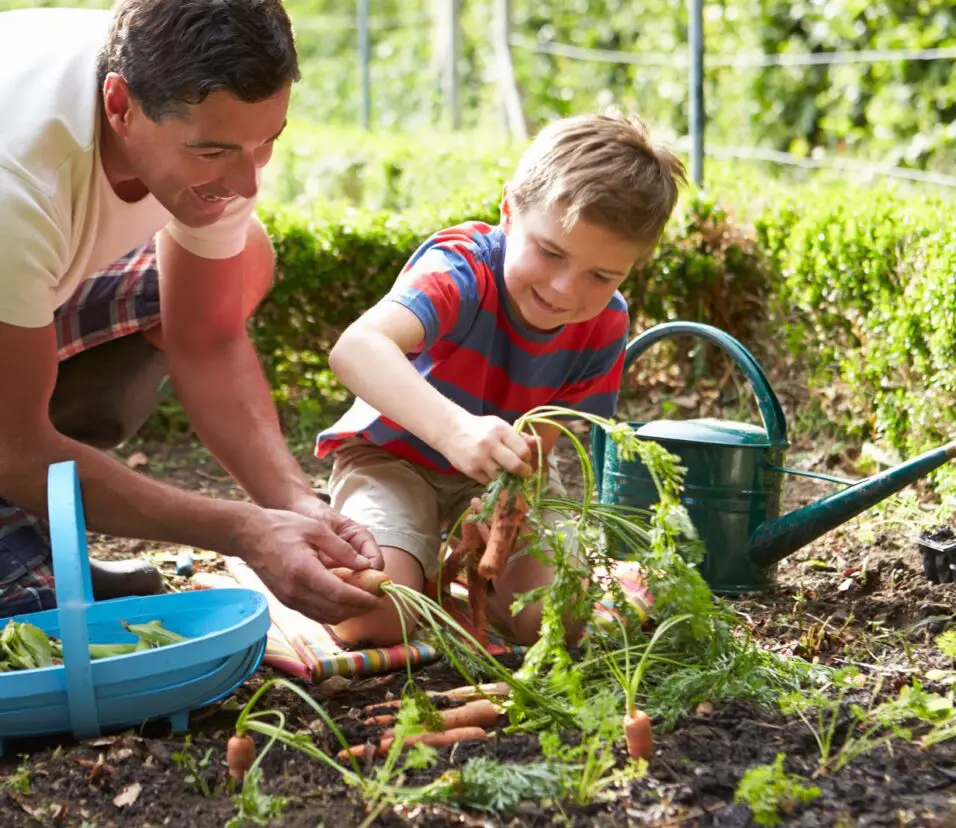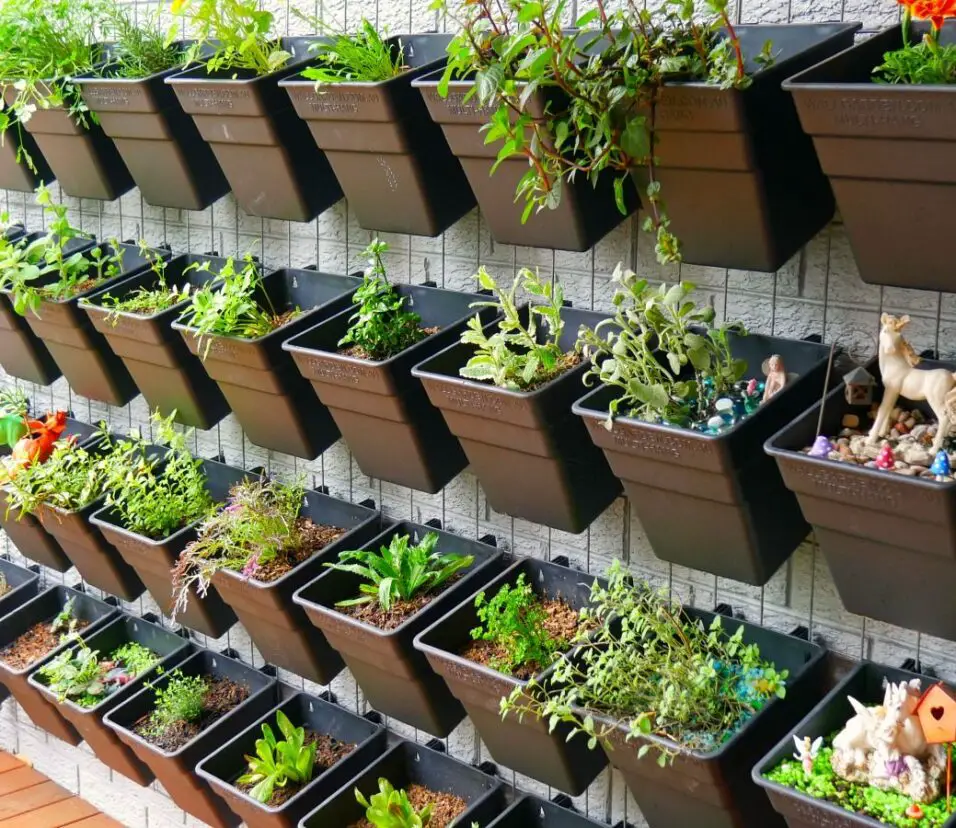How Is Community Gardening More Sustainable Than Large
Introduction
How Is Community Gardening More Sustainable Than Large: In an era defined by environmental concerns and the urgent need for sustainable practices, community gardening has emerged as a promising alternative to traditional large-scale commercial farming. This innovative approach capitalizes on local participation and collaboration to cultivate a range of benefits that extend far beyond mere food production. Community gardening promotes sustainability through its emphasis on reduced environmental impact, heightened biodiversity, and enhanced community resilience.
Unlike conventional commercial farming, where monoculture and extensive land use are common, community market gardening promotes diverse crop cultivation on smaller plots. This diversity not only supports healthier soil and minimizes the risk of pest and disease outbreaks but also encourages the growth of native plants, fostering biodiversity and supporting local ecosystems. Moreover, community gardens often employ organic and regenerative farming practices, reducing reliance on synthetic chemicals and minimizing the carbon footprint associated with transportation and distribution.
Additionally, community gardens foster a sense of shared responsibility and connection among participants, creating a strong social fabric that can withstand challenges. Local residents become active stakeholders in the production of their own food, leading to decreased dependency on distant suppliers and thereby lowering energy consumption. By cultivating a strong sense of ownership and collaboration, community gardening enhances food security and strengthens the community’s ability to adapt to changing conditions.
In this era of environmental uncertainty, the principles of community gardening offer a refreshing perspective on sustainable food production. Its focus on localized, diverse, and participatory approaches not only yields fresher produce but also nurtures ecological balance and community cohesiveness, making it a powerful model for a more sustainable future.

What is the difference between community garden and urban farming?
Community gardens have more people working on smaller plots than urban farms, which have fewer people working on the same space. Most urban farms focus on business and technology to maximize yields and sell produce.
Community gardens and urban farming both grow food locally, but they differ in scale, purpose, and structure. Community gardens are often smaller plots of land where people work together to grow food. That Community engagement, education, and social contact in these gardens create belonging and collaboration. Green spaces that enhance community well-being, environmental knowledge, and local relationships are prioritized alongside food production.
However, urban farming includes more agricultural activity in cities. Commercial operations, rooftop gardens, vertical farms, and aquaponics are examples. Urban farming emphasizes high-volume food production to generate revenue or supply a large amount of a community’s diet. Farming emphasizes sustainable food production, resource efficiency, and urban food security, but it can also engage communities. Urban farming focuses on food production and sustainability, whereas community gardens emphasize community involvement and education.
How community gardens are beneficial to the local community?
Many communities can benefit from increased access to healthful meals, strengthened community ties, reduced environmental hazards, fewer food miles, and a more sustainable system.
Community gardens have many benefits beyond food production. These gardens are active social hubs that unite disparate groups around a cause. Community gardens foster neighborhood togetherness by giving residents a place to work, talk, and grow.
These gardens teach people about sustainable farming, plant biology, and environmental care. Knowledge-sharing connects community members to nature and empowers them to make food and consumption decisions.
Community gardens boost emotional and physical health. Gardening relieves stress, improves mental clarity, and increases physical activity. Green spaces in cities improve quality of life by providing a peaceful retreat from metropolitan activity.
These gardens also provide fresh, locally grown produce to participants and adjacent people, addressing food poverty. This improves food access and nutrition, especially in places with few affordable and healthy options. Community gardens foster social relationships, teach information, promote well-being, and address food issues while enhancing the neighborhood’s vibrancy and sustainability.
What are the challenges of a community garden?
There are several potential challenges that one might face when starting a community garden, including finding a suitable location, securing funding and resources, getting support and participation from the community, and managing and maintaining the garden over time.
Community gardens, while offering numerous benefits, also encounter several challenges that can impact their success and sustainability. One primary challenge is securing and maintaining suitable land. Urban space is often limited and in high demand, making it difficult to find available and appropriately zoned land for gardening projects. Additionally, accessing water resources for irrigation can be a hurdle, particularly in areas with water scarcity or where water rights are complex.
Managing participation and engagement can also be demanding. Ensuring consistent involvement from diverse community members requires effective communication, leadership, and conflict resolution skills. Balancing varying schedules and commitments can sometimes lead to difficulties in coordinating tasks and responsibilities.
Financial sustainability poses another obstacle. Acquiring gardening supplies, tools, and materials for infrastructure maintenance requires funding. Relying solely on volunteer efforts or donations might not always provide consistent financial support for necessary resources.
Dealing with pests, diseases, and maintaining soil quality demands expertise and effort. Lack of gardening knowledge among participants can lead to challenges in plant care and crop management. Addressing these issues often requires education and ongoing training. The challenges of community gardens encompass land access, water availability, community engagement, financial sustainability, and agricultural knowledge. Successfully navigating these obstacles requires a combination of community support, effective management, and partnerships with local organizations and authorities.
What plants are best for a community garden?
10 Best Plants To Thrive in a Community Garden
- Winter Squash
- Carrots
- Eggplant
- Kale
- Onions
- Peppers
- Swiss Chard
- Tomatoes
Selecting the right plants for a community garden involves considering factors such as climate, soil type, available space, and the preferences and needs of participants. Opting for a mix of vegetables, fruits, herbs, and ornamental plants can create a well-rounded and productive garden.
Easy-to-Grow Vegetables: Tomatoes, peppers, lettuce, carrots, and beans are popular choices due to their relatively simple cultivation requirements and broad appeal.
Herbs: Basil, mint, rosemary, and parsley are versatile herbs that can be used in cooking and have therapeutic benefits. They are generally low-maintenance and compact.
Fruits: Strawberries, blueberries, and dwarf fruit trees like apple or pear can add a touch of sweetness and variety to the garden. Choose fruit varieties that are well-suited to your region’s climate.
Native Plants: Incorporating native plants supports local ecosystems and biodiversity. These plants are adapted to the local environment, requiring less maintenance and water.
Companion Plants: Some plants have beneficial interactions when grown together, like marigolds to deter pests or beans to fix nitrogen in the soil for neighboring plants.
Vertical Growing Plants: Vining plants such as cucumbers, squash, and beans can be grown vertically, saving space and enhancing visual appeal.
Pollinator-Friendly Plants: Flowers like sunflowers, lavender, and bee balm attract pollinators, enhancing garden productivity.
Cultural Crops: Including crops that reflect the community’s cultural diversity can create a sense of belonging and interest.
Regular crop rotation and succession planting can help maximize yield and prevent soil depletion. Consulting with local gardening experts or extension offices can provide tailored recommendations based on your specific location and community needs.
What are the key ways in which community gardening demonstrates greater sustainability compared to large-scale commercial farming?
First, community gardens are smaller, allowing for more localized production and less transportation, reducing food mile carbon emissions. Organic and agroecological practices are also used in these gardens to reduce synthetic pesticides and fertilizers, which destroy ecosystems and pollute water.
Community gardens increase biodiversity by growing more plant varieties and providing habitats for beneficial insects and wildlife. This contrasts with commercial farming monocultures, which can cause ecological imbalances and pest and disease vulnerability. Community gardens also encourage community engagement and education, teaching people how to raise food sustainably.
Community gardening lowers the need for long supply chains, saving energy and resources. Shared community garden surpluses increase community resilience and reduce dependence on distant suppliers. Community gardening can build a more sustainable and resilient food system than resource-intensive commercial farming by stressing local cultivation, organic methods, biodiversity enhancement, and community involvement.
How does community gardening contribute to local sustainability efforts differently than large-scale commercial farming practices?
Community gardening significantly diverges from large-scale commercial farming in its contributions to local sustainability efforts. Firstly, community gardens thrive on a small scale, promoting localized food production and reducing the carbon footprint associated with transportation, a stark contrast to the expansive distribution networks of commercial farming. These gardens often adopt organic and regenerative practices, minimizing the use of synthetic chemicals and cultivating healthier soils, which enhances local ecosystem resilience and reduces pollution risks.
Unlike monoculture systems common in commercial farming, community gardens emphasize crop diversity, preserving native plant species and fostering greater biodiversity. This approach bolsters local ecosystems, promotes natural pest control, and reduces the need for chemical interventions. Furthermore, community gardens function as educational hubs, fostering a deeper understanding of sustainable food production and connecting community members to the origins of their food.
The shared nature of community gardens cultivates a sense of ownership and cooperation, strengthening social ties and community resilience. The surplus produce generated is frequently redistributed locally, minimizing waste and supporting food security. In contrast, commercial farming’s profit-driven motives often prioritize yield over sustainability. Ultimately, community gardening stands as a grassroots model that holistically addresses environmental, social, and economic sustainability at the local level, differentiating itself profoundly from the resource-intensive practices of large-scale commercial farming.
In what specific ways does community gardening promote biodiversity and ecological balance more effectively than large-scale commercial farming?
A diverse plant population attracts more beneficial insects, pollinators, and natural predators, reducing pest pressure and chemical use.
Community gardens use smaller locations more efficiently than commercial farming, which clears enormous regions for single crops. This preserves native flora, which supports local fauna and environmental balance. Community gardeners also use heritage and indigenous plant varieties to preserve genetic diversity for environmental adaptation.
Community gardening promotes soil health and fertility by protecting soil structure and microbial populations from heavy machinery and synthetic chemicals. In contrast, commercial farming’s mechanical methods can compact and degrade soil. Community gardening encourages sustainable practice information exchange, improving ecological awareness and balance.
Community gardening’s focus on diversity, localized cultivation, and ecologically sensitive methods promotes biodiversity and ecological balance better than large-scale commercial farming’s uniform and resource-intensive methods.
How does the concept of “food miles” apply to community gardening versus large-scale commercial farming, and how does this relate to overall sustainability considerations?
The concept of “food miles” refers to the distance that food travels from its point of production to the consumer. In the context of community gardening and large-scale commercial farming, the difference is stark. Community gardening champions local food production, often situated within or close to urban areas, thereby significantly reducing food miles. This shortens the supply chain, decreasing energy consumption, carbon emissions, and the environmental impact associated with long-distance transportation.
Conversely, large-scale commercial farming frequently involves the transportation of goods over considerable distances to reach global markets. This results in higher food miles and increased energy usage. The preference for locally sourced produce in community gardening supports regional economies and reduces the strain on transportation infrastructure, aligning with sustainability goals.
Reduced food miles achieved through community gardening contribute to the conservation of resources, lowered greenhouse gas emissions, and minimized pollution. In contrast, the extensive transport network of large-scale commercial farming contributes to environmental degradation and inefficiency. By emphasizing local production and consumption, community gardening embodies a more sustainable approach, lessening the ecological footprint and enhancing overall sustainability considerations compared to the resource-intensive practices of large-scale commercial farming.

Conclusion
The virtues of community gardening as a more sustainable alternative to large-scale commercial farming are undeniable. Its ability to foster ecological harmony, social cohesion, and local resilience makes it a compelling solution for the challenges of our time.
By promoting biodiversity and adopting organic practices, community gardening champion environmental well-being. The diverse array of crops grown within these smaller plots helps restore soil health, reduce the need for synthetic chemicals, and mitigate the risks of crop failure due to pests or diseases. This, in turn, contributes to healthier ecosystems and a decreased carbon footprint, setting a positive example for responsible land stewardship.
Equally significant is the sense of community engendered by these gardens. As participants collaborate, they forge connections, learn from one another, and cultivate a shared sense of purpose. This social cohesion not only supports the garden itself but also lays the foundation for resilient communities capable of weathering challenges together. Moreover, the reduction in long-distance transportation associated with locally grown produce bolsters the overall sustainability of community gardening, cutting down on greenhouse gas emissions and fostering a more self-reliant food system.
In an era that demands thoughtful consideration of our ecological impact, resource consumption, and community bonds, community gardening shines as a beacon of sustainability. It showcases a model where small-scale efforts can yield significant positive outcomes, contributing to a healthier planet and more connected societies. As we navigate the complexities of our globalized world, embracing the principles of community gardening offers a path toward a brighter, more sustainable future for us all.








